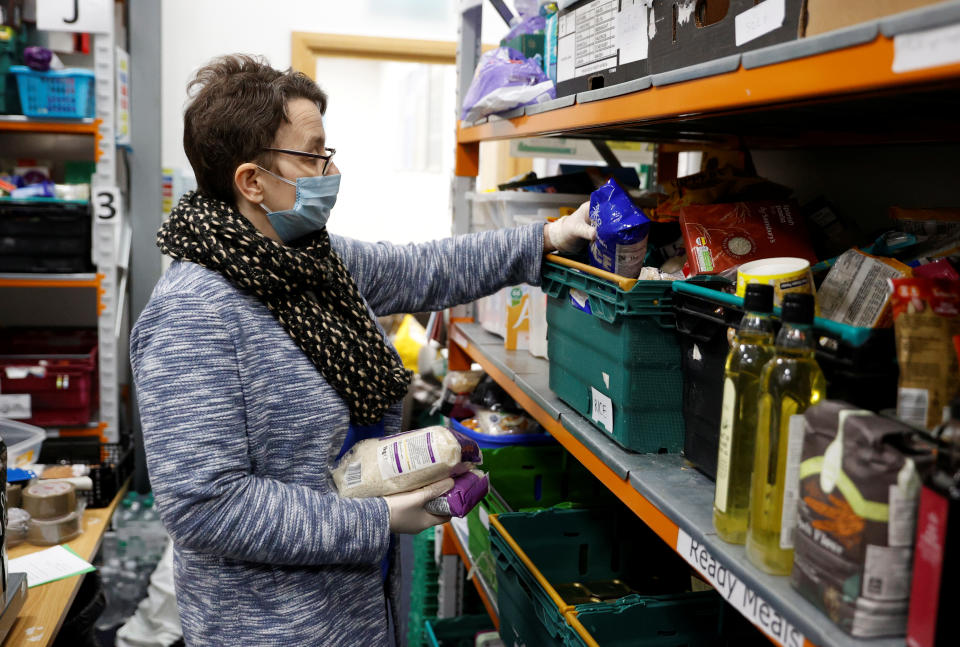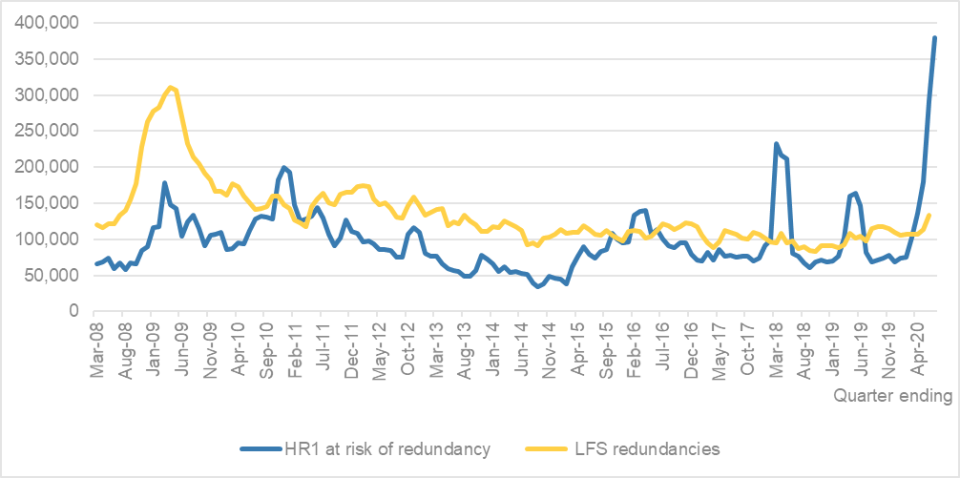Coronavirus: UK faces 450,000 job cuts and soaring foodbank use by Christmas

The UK faces hundreds of thousands more job losses this autumn and soaring foodbank demand in the run-up to Christmas, economists have warned.
Two studies released on Monday lay bare how the coronavirus is likely to continue to wreak economic havoc this year.
Around 450,000 redundancies are predicted in the autumn alone by the Institute of Employment Studies (IES).
Employers are required to notify government of large-scale redundancies, and analysis of official figures shows almost 380,000 were formally put at risk of redundancy between May and July.
The IES says the numbers are more than twice as high as at the peak of the global financial crisis in 2009, and would be the highest since records began in 1995. It expects actual redundancies in the autumn to be even higher, as employers only have to notify of job cuts affecting 20 or more staff.
READ MORE: Millions of UK households face £1,000 cliff edge next year
IES analysis of past data on the link between notified and actual redundancies suggests almost half a million workers are likely to lose their jobs. It warned the figure could exceed 700,000 if notifications continue to rise.
It comes as a separate study found levels of need for foodbanks are set to keep rising throughout 2020.
Demand is expected to peak at 1,325,000 parcels —which provide three days’ emergency food—in the final three months of the year. It would mark a 153% rise on the previous year, which had already been the busiest period on record for the Trussell Trust charity, the UK’s biggest foodbank network.
The study, carried out by the National Institute of Economic and Social Research (NIESR) for the charity, said a looming rise in unemployment went the worst was yet to come. The organisation expects unemployment to reach 9.8% in the final quarter of the year as Britain’s two main job protection schemes come to an end.

It said only around 14% of those newly in need of foodbank support were unemployed in the first three months of the year, when the pandemic first hit. But around 90% of additional demand in the final quarter of this year is expected to be triggered by unemployment, according to the NIESR.
The NIESR said the furlough scheme, help for small firms and top-ups to universal credit had been key, and called for the government to “continue to provide enhanced welfare support to the vulnerable.”
Meanwhile the IES is calling for targeted support to help firms in sectors still facing long-term disruption from the pandemic, but which remain viable in the long run, such as entertainment, leisure and aviation firms.
READ MORE: 450 Pizza Hut jobs at risk as 29 restaurants to close
It argues employers’ national insurance bills should be cut by raising the threshold for their contributions. It is also demanding proactive, “rapid response” support for those facing redundancy, with employment and training help from Jobcentres, colleges or training providers, councils and recruiters.
“This data lays bare the scale of the jobs crisis that we’re facing in the autumn, with half a million people likely to lose their jobs in the coming months,” said IES director Tony Wilson.
The sad reality is that this restructuring cannot be averted entirely, but we can do a lot more to minimise the job losses and support those who are most at risk.
“Our top priority must be to support those facing the prospect of losing their jobs to find new, secure and good quality work as quickly as possible.”

 Yahoo Finance
Yahoo Finance 